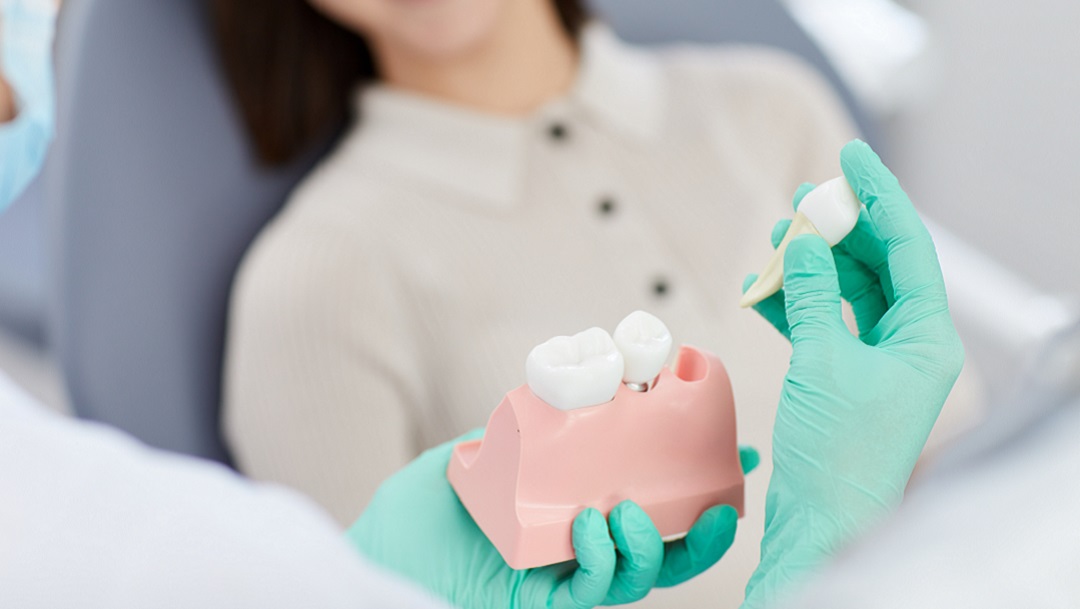Having a tooth extraction is not something anyone looks forward to. Mild pain and discomfort are common, but for most patients, it is something that resolves quickly as you heal. Unfortunately, dental extractions, especially those of molars and wisdom teeth, also come with the risk of dry socket. This often painful condition only affects about two to five percent of patients, and there are ways to reduce your risk. At Soundview Family Dental, we understand how intimidating a tooth extraction and dry socket risk can be. But, our expert dentist Dr. Kitts and his caring and experienced staff will work with you to better understand the process and how to reduce your risk of dry socket during recovery.
Key Takeaways
- Dry socket affects 2-5% after tooth extraction.
- Signs: white/black/green/yellow appearance at extraction site.
- Symptoms: severe pain, bad breath, unpleasant taste.
- Risk factors: age, gender, periodontal disease, medication, smoking.
- Tips: quit smoking, discuss meds, reduce bacteria, avoid sucking/spitting, follow post-op instructions.
What is a dry socket?
When you have oral surgery for tooth extraction, the removal of the tooth exposes the bone and nerves underneath. A blood clot forms over the extraction site to protect the bone and nerves from air, food, and bacteria exposure. Unfortunately, this blood clot can become dislodged or even dissolve within the first few days. When you lose that blood clot, your nerves and bone become exposed, resulting in dry socket. Dry socket can cause severe pain and increase your risk of infection.
What does it look like?
Seeing signs of a dry socket is not always possible, especially at the far back molars or wisdom teeth. If you can visibly see your extraction site, you may see a few visible signs if you have a dry socket. A healthy socket will be a hole with a noticeable blot clot in the center. If your socket appears white in color, chances are you are seeing exposed bone and have lost the blood clot. In cases where bacteria or infection cause the clot to dissolve, you may see a socket that is black, green, or yellow in color.
Signs and symptoms
While you might not always be able to see a dry socket, visible signs can include the presence of bone in the extraction site and any empty and dry-looking socket. In addition to these, dry socket causes a variety of symptoms, including:
- Severe pain within a few days after your extraction
- Radiating pain from the extraction site to your ears, eyes, temple, and neck
- Foul breath, often a sign of infection
- Unpleasant taste in the mouth, signaling possible infection
What causes dry socket?
Dry socket is caused by the complete or partial loss of the blood clot that protects the bone and nerves in the socket after tooth extraction. Loss of this blood clot can come from bacterial, chemical, mechanical, and physiologic causes.
- Bacterial – If you suffer from periodontal disease or have an existing infection in your mouth, the bacteria can break down the blood clot, leading to dry socket.
- Chemical – Certain medications and nicotine can decrease your body’s ability to form and maintain a clot.
- Mechanical – Sucking, such as through a straw or on a cigarette, or spitting can dislodge a blood clot.
- Physiologic – certain factors, such as a poor blood supply or a dense jawbone, can prevent an initial blood clot formation
Risk factors
While the chance of developing dry socket after a tooth extraction is low, there are certain factors that can increase your risk. These can include:
- Your age – If you are over the age of 30, your risk increases. At this age, your jawbone is denser and there is a reduced blood supply available. When these two factors combine, it reduces the chance of an ideal blood clot formation.
- Your gender – Women are at a higher risk of dry socket due to different hormonal factors affecting blood clot formation.
- Periodontal disease – Patients with periodontal disease have an increased risk of dry socket due to the presence of oral bacteria that can dissolve a blood clot or hinder initial blood clot formation.
- The tooth – The tooth you have extracted can also increase your dry socket risk. Wisdom teeth extraction, especially those that are impacted, can require the removal of the surrounding tissue and trauma to the jawbone. This trauma can affect the body’s ability to produce an initial blood clot.
- Certain medications – Medications, such as blood thinners, can affect your body’s ability to clot after tooth extraction. Be sure to let your oral surgeon know all the medications you are taking before your procedure.
- Smoking – The nicotine found in cigarettes can reduce the blood supply to your mouth, preventing the proper formation of a blood clot. The action of smoking can also dislodge a formed blood clot.
Tips to reduce the risk of dry socket
At Soundview Family Dental, we understand how painful dry socket can be. The good news is there are some things you can do before your extraction and during your recovery that can help reduce your risk.
Before your extraction
It is never too early to think about dry socket prevention, and it actually begins before you even have your tooth removed. Some tips include:
- Stop smoking – If you know you have a tooth extraction coming up, now is the perfect time to give up smoking. Talk with your physician about ways to successfully break the habit for good.
- Discuss your medications – Certain medications can increase the risk of poor blood clot formation and dry socket. Be sure that your oral surgeon is aware of all your medications and supplements before your procedure.
- Reduce oral bacteria – If you have a history of periodontal disease, talk with your oral surgeon about antibacterial mouthwashes or the possibility of oral antibiotics. Your surgeon may also suggest applying antiseptic or medicated dressing to your extraction site to reduce the bacteria present.
During recovery
What you do after your tooth extraction can also affect how your blood clot forms, as well as making sure it stays in place until you completely heal. While you will receive after-extraction care from your dental surgeon, these tips can also help reduce your risk of dry socket.
- Give yourself time to heal – While a tooth extraction is not likely to keep you from your regular daily activities, it is important to give your body time to rest and heal. Avoid strenuous activity that could cause a clot to dislodge, such as rigorous exercise.
- Avoid certain beverages – For healing, it is important that you keep your body hydrated. However, you should avoid drinking alcoholic, caffeinated, carbonated, or hot beverages as they can break down a blood clot. Also, avoid drinking with a straw for at least a week as the sucking action can dislodge a formed blood clot.
- Eat soft foods – For the first couple of days, eat only soft foods and try to chew on the opposite side of your extraction. Harder foods can cause a blood clot to dislodge.
- Avoid smoking – If you cannot quit smoking before your extraction, avoid smoking for as long as you can. The nicotine in the cigarettes can hinder clot development, while smoking can dislodge a formed clot.
Treatment for dry socket
Dry socket treatment focuses on treating the pain and promoting healing. Your oral surgeon may flush out the socket to remove any food particles and bacteria that could be contributing to pain and infection risk. After cleaning, your surgeon can choose to pack the socket with a medicated dressing that will provide fast pain relief and promote healing. Once the dressing is removed, you will likely be sent home with a syringe so you can flush the socket on a regular basis to help promote healing and reduce debris in the socket.
Dry socket can be a very painful condition and doing everything you can to reduce your risk is essential. At Soundview Family Dental, we are here to help and answer all your questions. If you would like to learn more about tooth extractions and your risk of dry socket, please call our office at (425) 563-6360 or schedule an appointment online.


